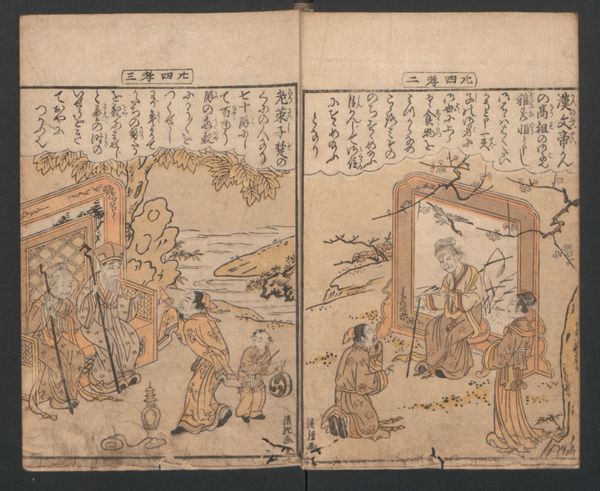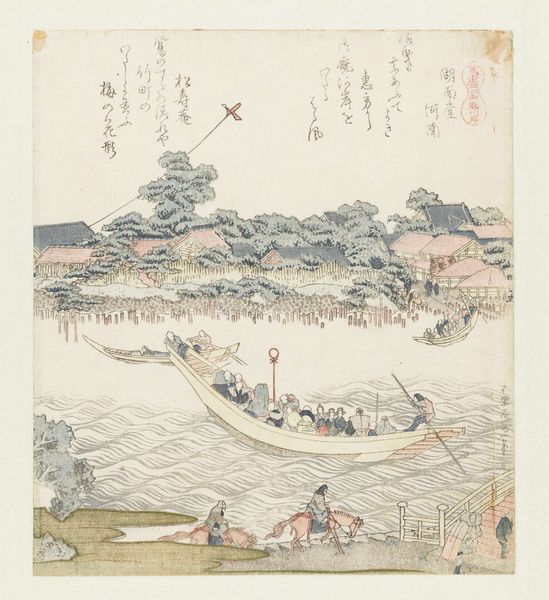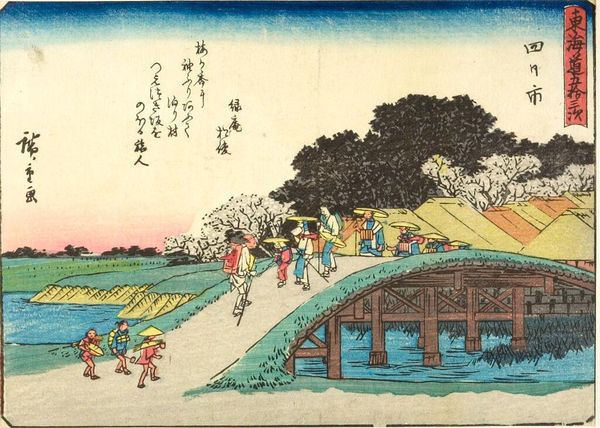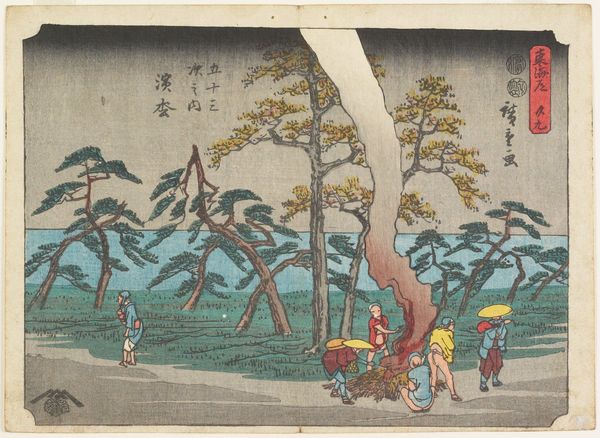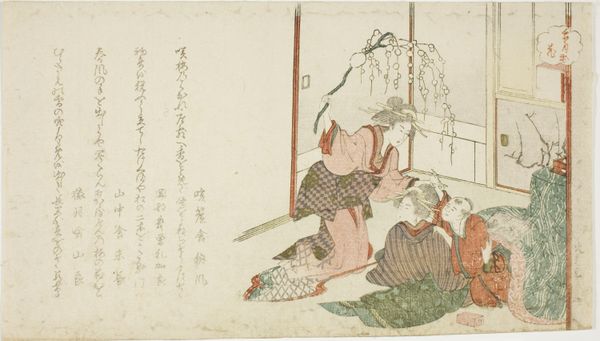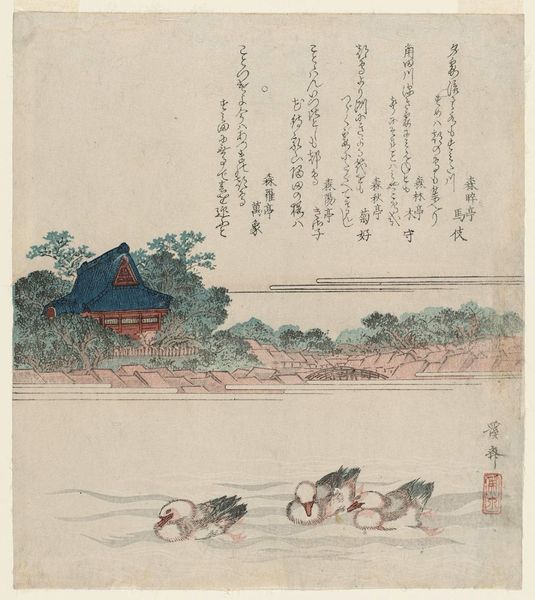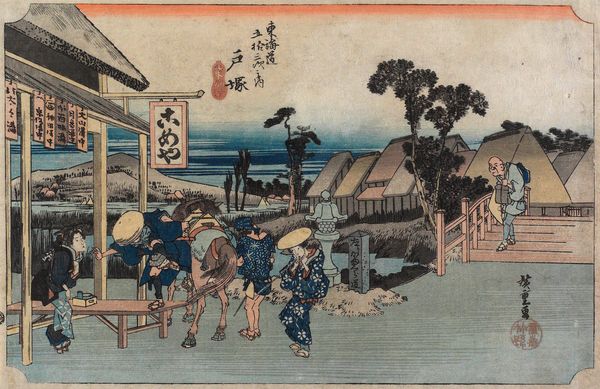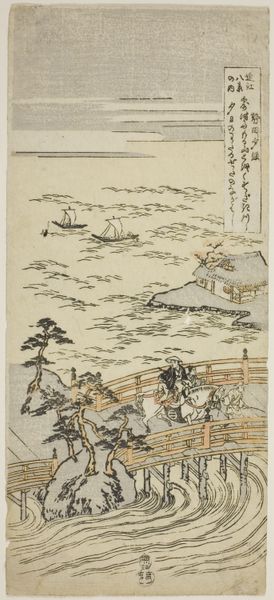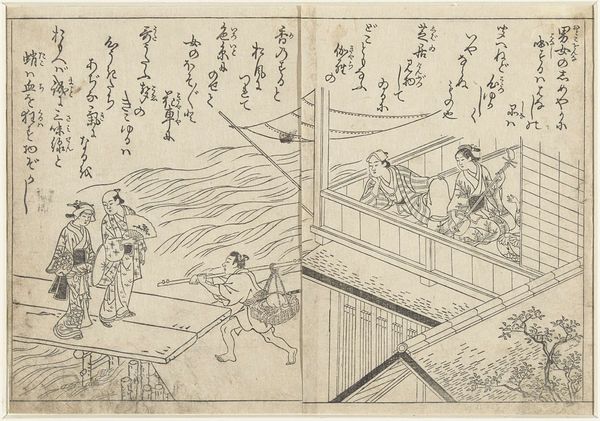
print, paper, ink, woodblock-print
# print
#
asian-art
#
landscape
#
ukiyo-e
#
figuration
#
paper
#
ink
#
woodblock-print
#
line
#
history-painting
Copyright: Public domain
Editor: This print, "Gale to Asajigahara", is an intriguing woodblock print on paper. It feels quite sparse, almost unfinished. There's this group of figures caught in what seems to be a storm, but what do you see in this piece that maybe I’m missing? Curator: Well, what immediately strikes me is the relationship between the natural world and the figures depicted. How is nature represented, not as a static backdrop, but as an active force, impacting human lives and movement? Consider also that prints like this one circulated widely. Editor: So, beyond the immediate aesthetic, what role would an image like this have played in the society that consumed it? Is it just about visual pleasure, or something more? Curator: That's a good question. These Ukiyo-e prints, mass produced and relatively affordable, weren't just decorative. They played a role in shaping public perception of places and events. Editor: How so? Was it about communicating specific ideologies, or… Curator: It could be, but also, consider that this piece can create and reinforce shared cultural understandings and experiences. This print likely evokes notions of pilgrimage, local history, and poetic references, and does so on a scale never seen before, changing the consumption habits of visual art, for good. What do you take from all that? Editor: It makes me consider how art’s availability shapes what people deem culturally valuable. It moves us to think more deeply about accessibility in art and its ripple effect, for everyone. Curator: Indeed, considering the public life of art is fundamental. It reminds us that the power of images extends far beyond their creation.
Comments
No comments
Be the first to comment and join the conversation on the ultimate creative platform.
